The D.E. Scorpio Corporation – New Look. New Location.
/in Uncategorized /by Shaw Adcock
The excitement surrounding some big changes has been building for construction management company, the D.E. Scorpio Corporation. A lot has been happening behind the scenes and the team is thrilled to make the following announcements.
As of May 21st, the company relocated into its newly renovated office building at 3911 West Newberry Road. Continued growth and the need for a space that more adequately reflected the company’s culture and values was the driving force behind the move. The new office was designed to provide a more collaborative and transparent environment, generating improved communication and creativity throughout the organization.
The building was constructed in 1974 and was designed by Craig Salley Architecture and served as its offices for over 30 years. More recently it had developed into tenant space with a variety of businesses occupying the space. When the D.E. Scorpio Corporation acquired the building, extensive renovations both to the interior and exterior created an open floor plan with improved natural lighting, collaborative work spaces, and large multipurpose areas for meetings and events.
The transition into a new home inspired leadership to make a few more changes, the biggest is the new name. Going forward the company will be known as Scorpio. “That decision was easy,” says founder and President, Domenic Scorpio. “We entered into a comprehensive rebranding discussion and put everything on the table. After numerous interviews with our employees, trade partners, clients, owners and consultants it became apparent that we didn’t need an overhaul, in fact we just needed to simplify. Everyone was already referring to us as Scorpio so why not go ahead and make it official?”
During the rebranding process the team identified additional areas that needed refining. With a new name came a new logo and the visual elements that accompany that integral component. But more importantly, came the unified messaging about the company with its people as the central focus. “The company was reaching new milestones every day, so it was decided we needed to take the time to articulate exactly who Scorpio was, and more importantly our why,” says Jennifer Denault, Marketing Director for Scorpio. “Community-centered construction was something we had been practicing and is the driver behind all of our decision making. We just needed to invest the time and resources to articulate that more clearly to our partners and the public. One of the bigger changes people will notice is our website. ScorpioCo.com now reflects in word and image who we are and what we believe.”
Scorpio is a devoted and seasoned team of construction professionals who build to enliven communities and beautify cities. People need buildings that frame their lives. Owners need return on investment. We deliver both through dedication to detail and holistic responsibility for your budget. And when you work with us, you’ll be treated with care and respect – like family. We call this approach, community-centered construction. Let’s bring your building to life, for life.
Visit the new website here.
A Change in Bad Habits Leads to a Change in Life
/in Uncategorized /by Shaw Adcock

